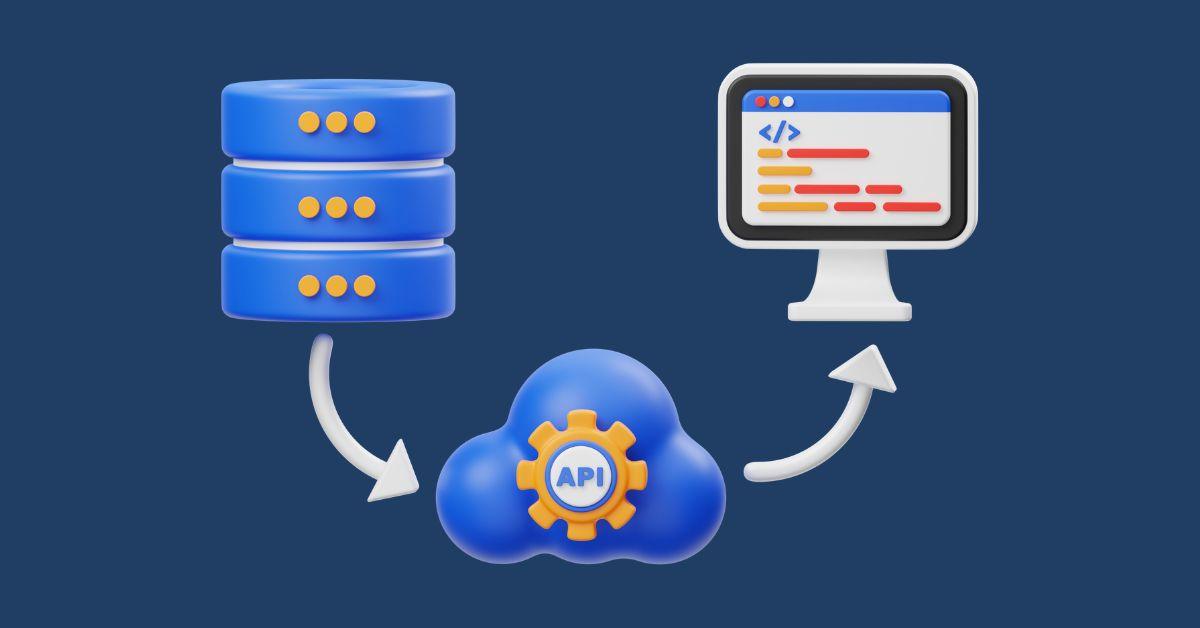Introduction
In the fast-paced world of technology, APIs (Application Programming Interfaces) have been a cornerstone, evolving drastically over the years. From simple function calls in early computing systems to the complex web and cloud-based APIs we see today, the journey of APIs is nothing short of revolutionary. In this blog, we'll dive deep into the evolution of APIs, understanding their past, present, and what the future might hold.
The Early Days: Understanding the Roots
From Local to Networked APIs
In the beginning, APIs were primarily local, facilitating interaction within the same system. With advancements in networking, the concept of networked APIs emerged, allowing different systems to communicate over a network. This evolution from local function calls to networked requests was the first major leap in API technology.
The Rise of Web APIs
SOAP and XML-RPC
As the internet gained momentum in the late 1990s and early 2000s, so did Web APIs. Standards like SOAP (Simple Object Access Protocol) and XML-RPC (XML Remote Procedure Call) were among the early players, using XML to format messages. Despite their reliability, they were often criticized for being too verbose and complex.
REST Takes Center Stage
REST (Representational State Transfer) entered the scene as a simpler, more efficient alternative to SOAP. It leveraged standard HTTP methods and focused on statelessness and cacheable data, making it immensely popular for web development. Our Ultimate Guide to APIs delves deeper into RESTful principles.
Current Trends and Best Practices
Microservices and API-First Design
Today, the microservices architecture dominates, with APIs acting as the glue between small, independent services. This approach offers scalability and flexibility. Furthermore, the API-first design strategy prioritizes API development in the software development lifecycle, ensuring seamless integration and quality user experiences.
GraphQL: A New Contender
GraphQL presents a powerful alternative to REST, allowing clients to query exactly what they need. It’s efficient, fast, and flexible, making it a go-to for many modern applications. More about GraphQL can be found in our comprehensive API guide.
Security and Compliance in the Modern API Landscape
Ongoing Challenges
With the proliferation of APIs, security has become a paramount concern. Common vulnerabilities include inadequate authentication, injection attacks, and insufficient logging and monitoring. It’s crucial to follow best practices like using OAuth for authentication and implementing robust input validation.
Compliance Matters
APIs must also comply with data protection regulations like GDPR, CCPA, and others. This involves ensuring data privacy, secure data handling, and transparent user consent mechanisms.
Looking Ahead: The Future of APIs
As we look forward, the trend is shifting towards more specialized, efficient, and secure APIs. The emergence of AI and IoT is pushing APIs into new territories. APIs are expected to become more intuitive, capable of handling complex data structures seamlessly, and providing more robust security features.
The rise of decentralized architectures with blockchain technology is also shaping the future of APIs. Blockchain APIs are emerging, enabling new ways of data validation and transaction.
The Role of AI and Machine Learning
The integration of AI and machine learning with APIs is set to transform how data is processed and insights are gleaned. This could lead to more intelligent, adaptive APIs capable of handling complex tasks with minimal human intervention.
The Emergence of Edge Computing
As IoT devices proliferate, edge computing will play a significant role. APIs in this realm will need to be more efficient and resilient, capable of operating in less stable environments.
Blockchain and Decentralized APIs
Blockchain technology might introduce decentralized APIs, leading to more secure and transparent transactions. This could revolutionize how data is exchanged and verified across networks.
API Integration Checklist
Understanding API Documentation
- Objective: Gain a thorough understanding of the API's functionality, data formats, and limitations.
- Action Items: Read through all available documentation, focusing on endpoint descriptions, request/response formats, and usage examples.
Setting Up Authentication
- Objective: Establish secure access to the API.
- Action Items: Implement the recommended authentication protocol (API keys, OAuth tokens, etc.), ensuring all requests are properly authenticated.
Environment Configuration
- Objective: Prepare a development environment that closely simulates the production environment.
- Action Items: Set up local or virtual environments, install necessary libraries or SDKs, and configure network settings as required.
Data Format Handling
- Objective: Ensure compatibility with the API’s data exchange formats.
- Action Items: Incorporate functionality to parse and generate required data formats (like JSON, XML) in your application.
Robust Error Handling
- Objective: Manage and mitigate potential API-related errors effectively.
- Action Items: Develop comprehensive error handling logic to catch, log, and appropriately respond to various API error responses or connectivity issues.
Comprehensive Testing
- Objective: Validate the integration’s functionality and performance.
- Action Items: Perform various tests including unit tests, integration tests, and performance tests to ensure reliable integration.
API Migration Plan Template
1- Current API Assessment
- Objective: Understand and document existing API usage and dependencies.
- Action Items: Audit current API integrations, noting endpoints, request types, and data dependencies.
2- Identifying Migration Needs
- Objective: Outline the requirements and scope for migrating to a new API.
- Action Items: List new features, altered endpoints, or changes in request/response structures necessary for migration.
3- Migration Strategy Development
- Objective: Plan a detailed and feasible migration path.
- Action Items: Create a step-by-step plan including timelines, resource allocation, and rollback strategies.
4- Post-Migration Testing
- Objective: Ensure the API functions as expected after migration.
- Action Items: Conduct thorough testing to check for functionality, performance, and compatibility issues.
5- Post-Implementation Monitoring
- Objective: Maintain API health and performance post-migration.
- Action Items: Set up ongoing monitoring systems to quickly identify and resolve any post-migration issues.
API Feature Comparison Chart
| API Type | Key Features | Primary Functions | Current Tech Examples |
|---|---|---|---|
| REST | - Stateless, scalable<br>- Supports JSON, XML, YAML | - CRUD operations<br>- Web services and apps | Twitter, Google |
| SOAP | - Protocol-based, secure<br>- Uses XML | - Enterprise-level services<br>- Security, reliability | PayPal |
| GraphQL | - Specific data queries<br>- Minimizes data fetching | - Complex data retrieval<br>- Dynamic client apps | Shopify, GitHub |
| gRPC | - Binary format, low latency<br>- Supports streaming | - Microservices communication<br>- Performance-focused apps | Netflix |
| WebSocket | - Full-duplex, real-time<br>- Persistent connection | - Live updates<br>- Chat apps, streaming | Slack |
| OData | - Standardizes REST APIs<br>- Complex query options | - Data-centric apps<br>- Analytics, reporting | Microsoft Azure |
| JSON-RPC/XML-RPC | - Multiple data formats<br>- Simple and flexible | - RPCs<br>- Internal system communication | Internal APIs in various companies |
Future-Proofing API Development Checklist
Scalability Considerations
- Objective: Design APIs with future growth in mind.
- Action Items: Implement scalable architectures (like microservices), use caching mechanisms, and plan for load balancing.
Adaptability for Emerging Technologies
- Objective: Keep APIs flexible for technological advancements.
- Action Items: Design APIs with modularity, allowing easy updates and integration of new technologies.
Adhering to Security Best Practices
- Objective: Ensure continuous API security.
- Action Items: Regularly update security protocols, conduct security audits, and educate team members about best practices.
Comprehensive Documentation and Community Engagement
- Objective: Maintain clarity and support for API users.
- Action Items: Regularly update documentation, provide clear changelogs, and actively participate in or host community forums or discussions.
API Monitoring and Performance Template
Key Metrics for API Health Monitoring
- Response Time Monitoring: Track and analyze the latency of API calls.
- Error Rate Analysis: Regularly review the type and frequency of errors encountered.
- Throughput Measurement: Assess the API’s ability to handle large numbers of requests.
- Data Transmission Monitoring: Keep tabs on the volume of data sent and received.
- Uptime Tracking: Ensure the API consistently remains accessible and functional.
Tailor these metrics to suit specific API requirements and business goals.
Conclusion: A World Built on APIs
The evolution of APIs mirrors the evolution of technology itself - constantly moving towards greater efficiency, security, and user-friendliness. As we look back on this journey, it's clear that APIs have been pivotal in shaping the digital world as we know it. And as we look ahead, their role only seems to be growing more critical.
We invite you to explore further in our Ultimate Guide to APIs and join the conversation. How do you see APIs evolving in the future? Share your thoughts and insights in the comments below!




